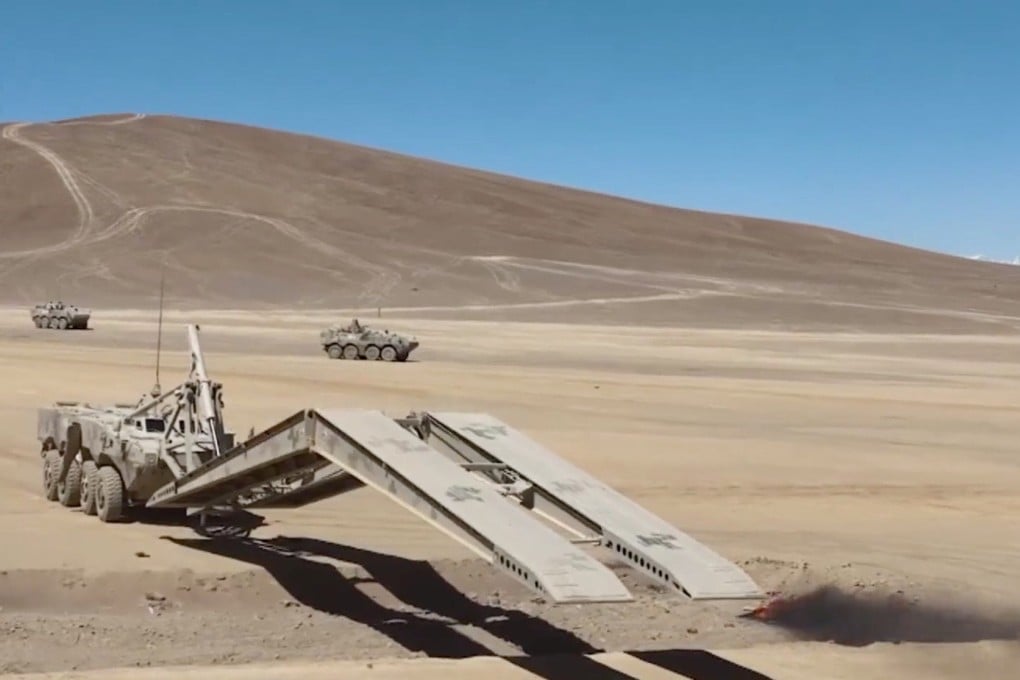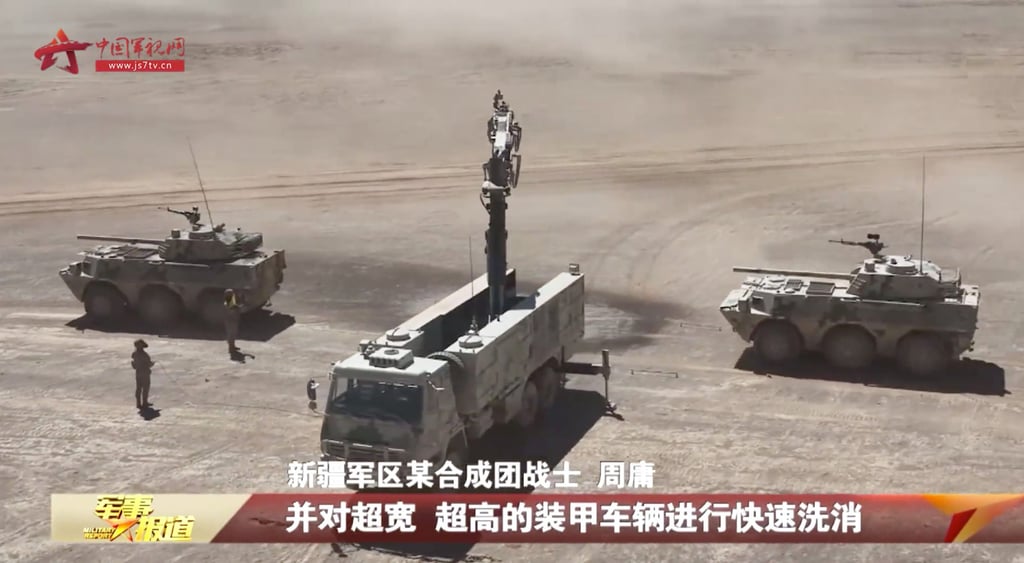China’s Xinjiang forces put military engineering advances to simulated modern battlefield test
- State media showcases joint operation drill and the PLA’s new vehicle types in mountain regiment exercises in Karakoram Desert
- Exercise tests new equipment, but also the joint operation capabilities between machines and troops, says former Taiwanese naval instructor


CCTV video footage showed two-wheeled assault bridge vehicles spanning a trench to help light infantry tanks cross and then keep moving while under simulated long-range missile attacks.
“The mobile assault bridge was designed to accompany light infantry to overcome man-made and natural barriers, such as tank trenches, ditches, and bomb craters, to ensure the fast passage of … all military vehicles,” said Zhang Shifeng, commander of a synthetic regiment in Xinjiang.
The state media report showed the battle groups hit by chemical weapons. A temporary disinfection site was rapidly established and a huge decontamination vehicle opened its gantry to wash and disinfect all military vehicles.
After overcoming the obstacles, the combined forces arrived at their destination. The intelligence force flew drone reconnaissance missions on the “enemy” before launching a full-scale attack, including having an electronic jamming unit carry out electromagnetic suppression, according to the CCTV account.